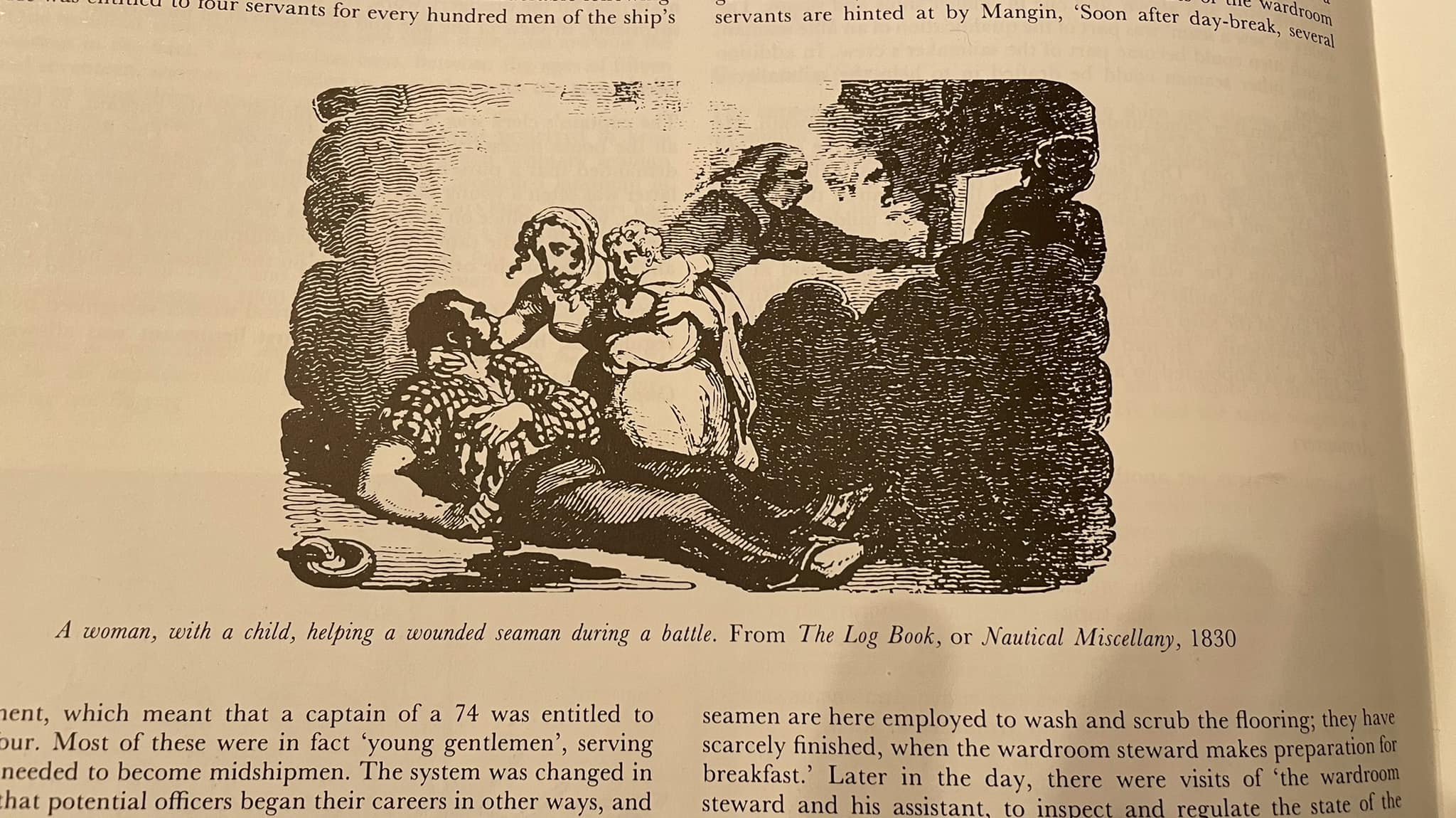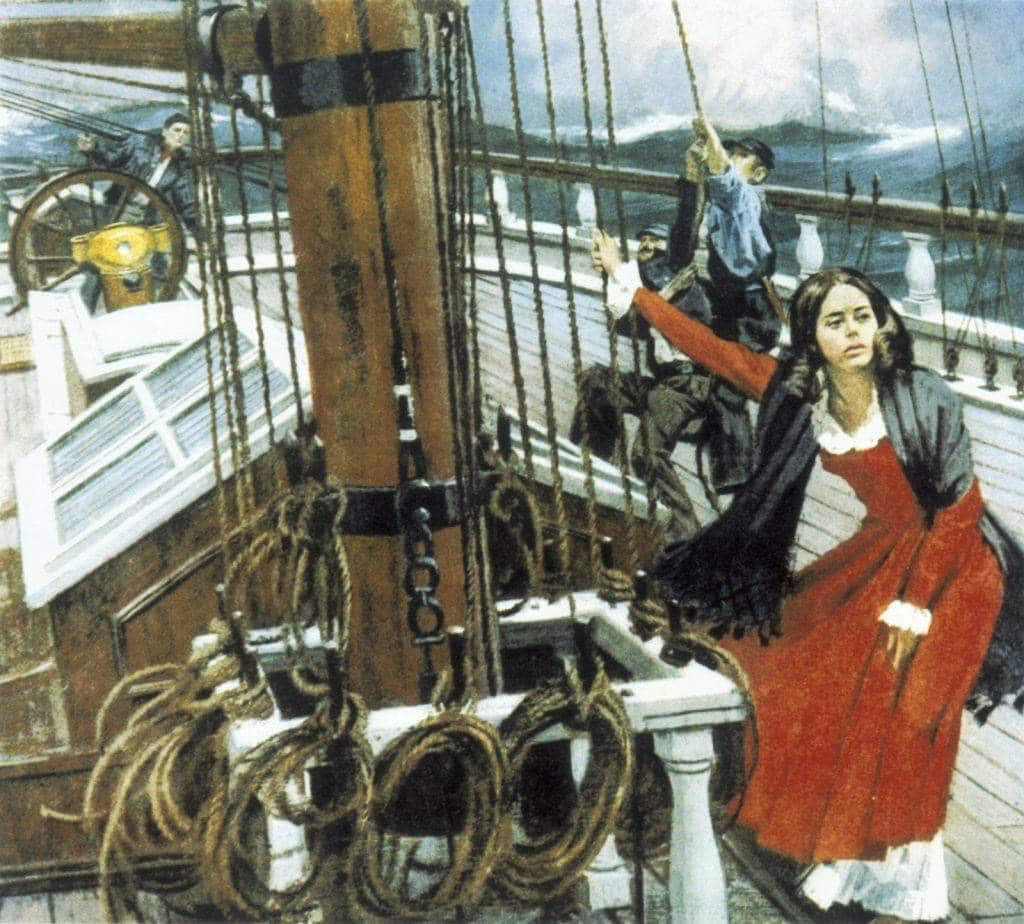Fiction often portrays that women were unwelcome on ships. According to superstition, women brought bad luck to the voyage. Yet, in British Royal Navy, many wives of officers followed their husbands to sea. How was daily life for these brave women onboard?
Wives of officers
Although officially spouses were generally not permitted on ships, officers such as the boatswain, gunner, carpenter, and others would often bring their wives onboard. No provision was made for their wives as they were not included in the muster books. The women had to share their husbands' food as well as a hammock, with very little room for privacy.
Below Deck
Even worse would be the situation for a woman living below deck, most likely a prostitute taken from shore. She would sleep among rows of hammocks with the smallest amount of space between them—14 to 16 inches. The combination of poorly washed clothes, rotting food, human waste and sweat provided an environment for diseases to spread quickly, with little treatment available.
Roles in Battles
Ship
battles put everyone onboard in danger of terrible injuries and violent death. Women
took part in combat by working as “powder monkeys”, the job often reserved for
boys. They would repeatedly go to the gunpowder storage, collect some powder, and
make their way back to the gun, possibly that of their husband. Some wives
teamed up with their husbands to load the guns. Other women helped below deck, where
the surgeon would be amputating shattered limbs. These operations were done through
the battle, in under two minutes each, and without anesthesia. Some women went
into labor during battles; the surgeons would have no time to care for them.

Female tars
There were women who disguised themselves as men and managed
to keep their secret for many years. How did they manage to hide their sex? Seamen
seldom bathed and slept in their clothes. Physical examination for recruits
were cursory. Hannah Snell, a marine,
spent many months in a hospital with wounds in her thighs, and the doctors
never realized she was a woman. Flogging, however, did reveal a few sailors to
be females.
Honors denied
In 1847, Queen Victoria awarded a Naval General Service Medal
to all living survivors of the major battles fought between 1793 and 1840. One
recipient didn’t fight the battle; he was a baby boy born during it. Yet the
four women who applied for the award for their active roles in The Battle of
Nile and Trafalgar were denied.
The accounts of women on ships at the Age of Sails were
often overlooked by historians, writers, and movie makers. I find inspiration
in stories of these brave and able women.
Sources:
Female Tars. Women Aboard Ship in the Age of Sail by Suzanne
J. Stark
Nelson’s Navy. The Ships, Men and Organization by Brian
Lavery

